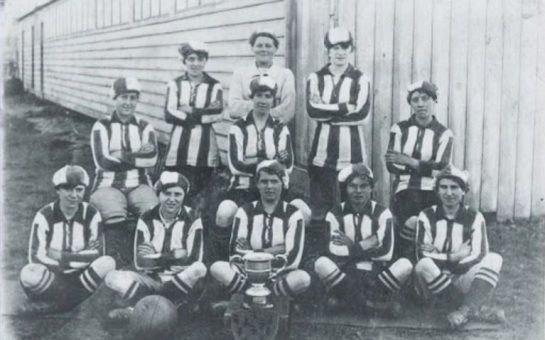Ghostly guests, creepy cabs and haunted high streets – south west London is full of spooky stories this Hallowe’en.
London’s prolific history is a target for those with a dark side, and south west London isn’t short of eerie secrets that hint at some immortal residents.
If you fancy giving yourselves the heebie jeebies this Hallowe’en then read on…
Stane Street Syndicate – 196 Clapham High Street
The pub opposite Clapham Common station began as The Plough Inn in 1912, but the building itself dates back hundreds of years.
The quintessentially English pub gained a reputation for being haunted in the 1970s, following reports from new Landlord Felwyn Williams and his wife that strange things were happening at night.
Soon after, they began catching glimpses of a lady dressed in white with long black hair.
Each time, she was said to be standing very still, staring out of one of the top floor windows that can still be seen from the street today.
This mysterious ‘White Lady’ was soon nicknamed Sarah, and Mr Williams became so spooked he left the pub promptly after the sightings began.
“I’ve been working here for six or seven months, it’s a super old pub and upstairs at the very top it’s pretty creepy,” said Stane Street Syndicate barman Keaney.
“It’s kind of derelict, a lot of this pub isn’t used, especially upstairs. The doors don’t get opened and no one goes inside.”
It has been suggested that ‘Sarah’ haunts the very top floor of the pub, which remains unoccupied today and is not even used for storage purposes.
Until the 1970s, it was never understood why from the street you could see three top floor windows of the pub, but those who worked inside could only find two that looked out onto the street.
The location of this third window remained a mystery until renovators knocked a wall down and uncovered a large, antiquated room that had been bricked up and left untouched.
It is unknown what the history behind this room is, and why it was bricked up and separated from the rest of the building.
It’s almost as if something happened there that people would rather forget…
Clapham Common Phantom Hansom
The Hansom cab was invented in the late 1830s and became a popular form of travel, especially in London.
It is rumoured that those walking across the common at night have witnessed a spectral hansom cab silently speeding towards Clapham south, with no sign of a driver.
In the early 1900s, Harry Smith Bilbe, a young man living in the area, published an account of his experience with the Hansom cab.
He was cycling home at around 2am one morning, and had just passed the Plough Inn (see above).
As he travelled home, he saw a Hansom cab racing towards him, causing him to swerve off the path.
“I looked up as I passed, intending to say something forcible to the driver, but was astonished to see the drivers seat was empty,” Mr Smith Bilbe wrote at the time.
More sightings and rumours swirled for the next 50 years or so, but no modern accounts of the cab have been recorded.
New Wimbledon Theatre
The New Wimbledon Theatre was built by J.B Mulholland and opened its doors to the public on December 26, 1910.
Many audience members and former staff of the theatre have reported ghostly occurrences and sightings of a man and a woman, both in Edwardian dress, but never seen together.
In the 1970s the manageress at the time was staying in the living quarters before it was renovated into the ticket hall, and awoke to see an old lady staring down at her.
As she stared back at the woman trying to make sense of what she was seeing, she levitated up and disappeared through the ceiling.
A front of house member of staff currently working at the theatre said: “I’ve never seen anything exactly, but I’ve been here after hours a couple of times and going into the stalls alone always feels weird.”
Rumours swirled in the 1960s and 1970s of a man in Edwardian clothing sitting in seat B27 after hours, believed to be the ghost of J.B Mulholland.
The theatre is a grade II listed building, and its rich history certainly makes the mind wander…




